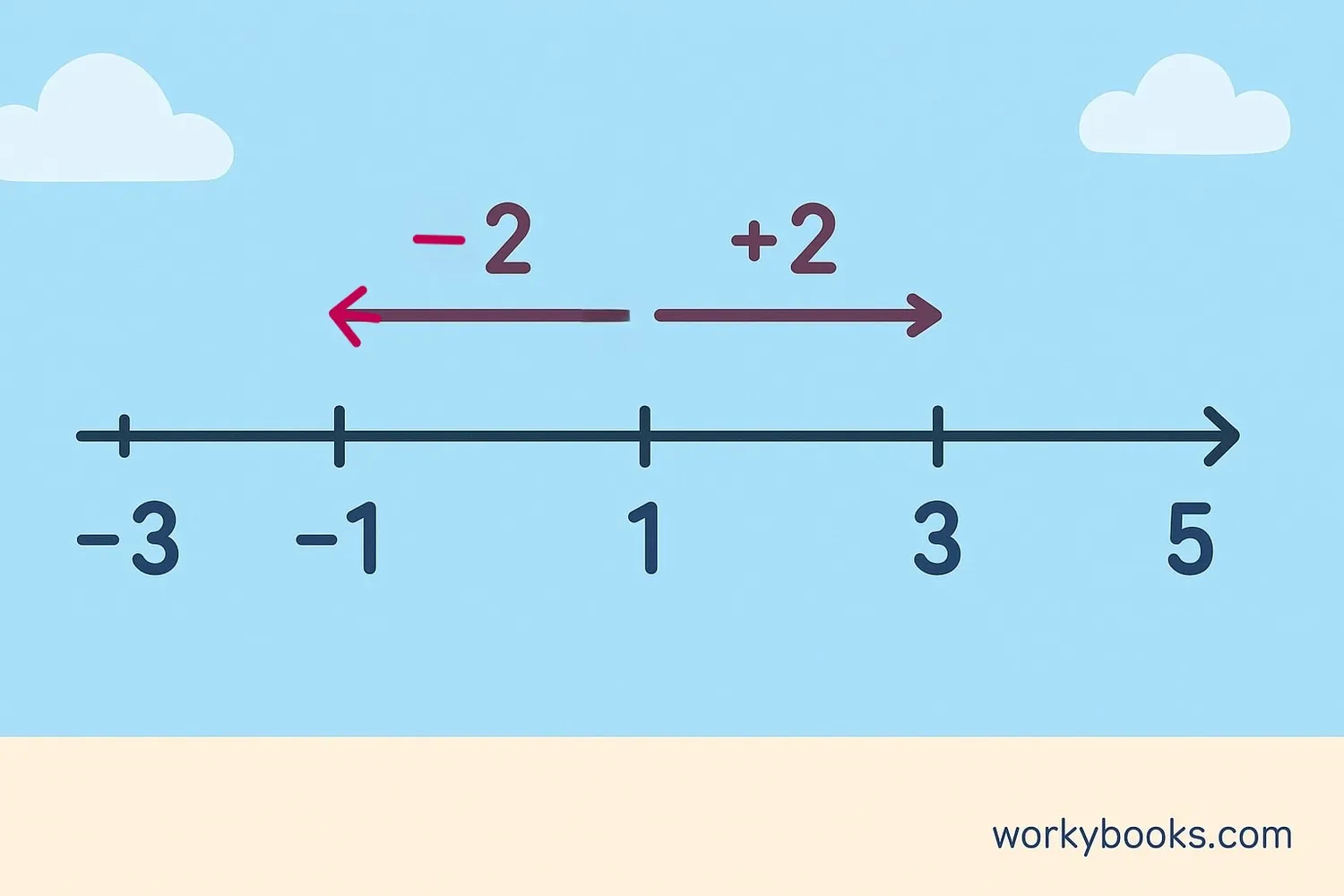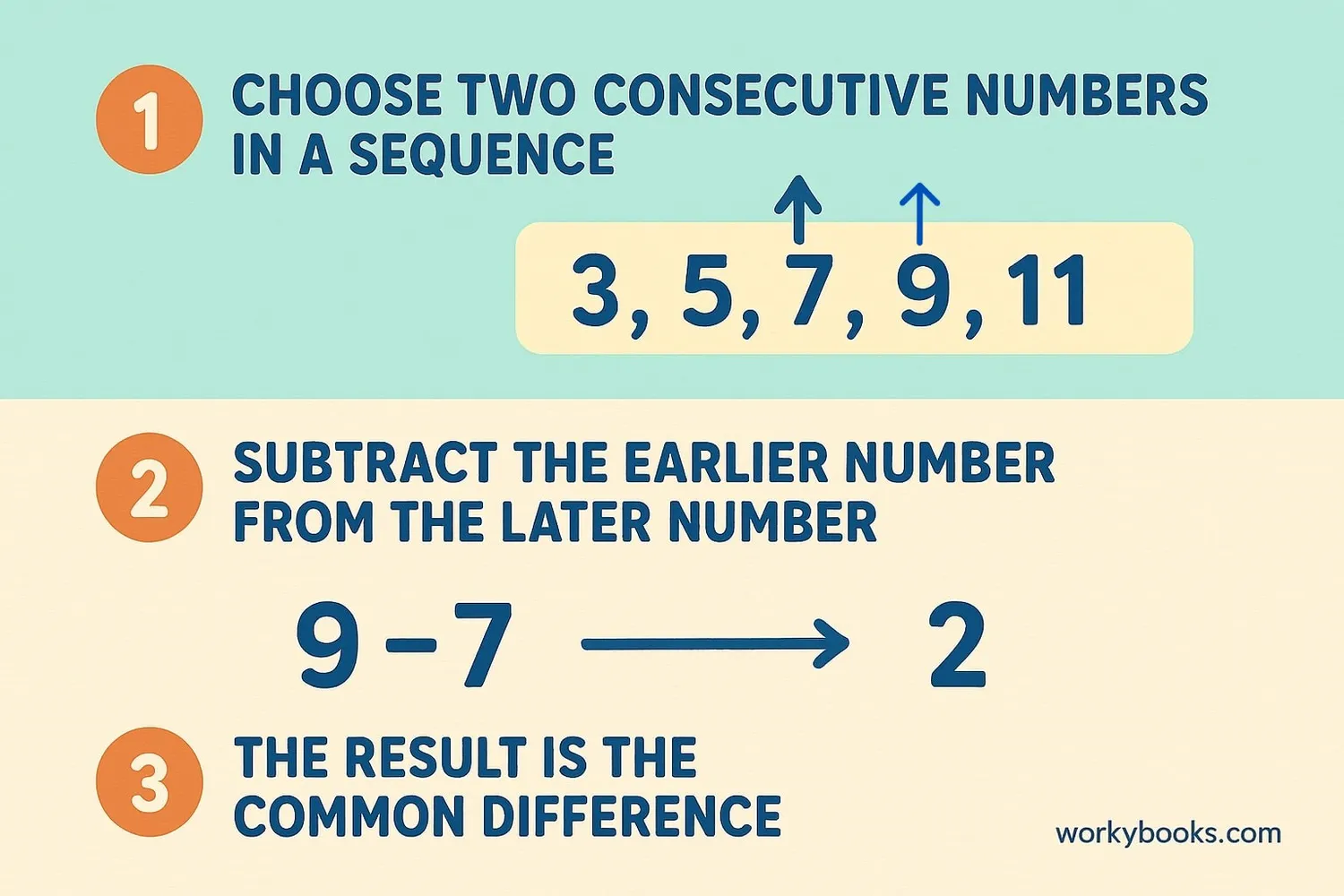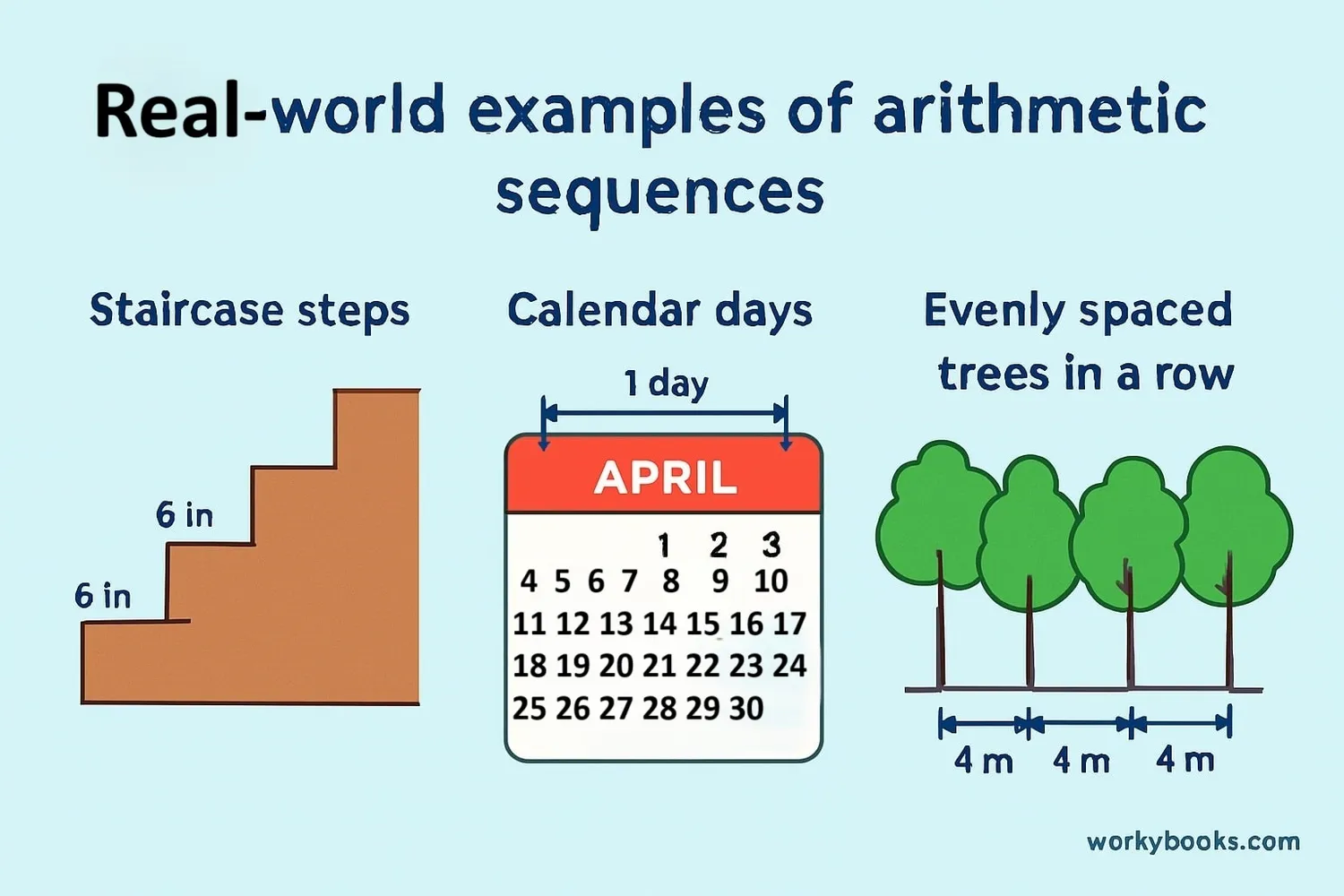Common Difference in Math - Definition, Examples, Quiz, FAQ, Trivia
Learn about arithmetic sequences and how to find the common difference with simple explanations and activities
What is Common Difference?

The common difference is a special number in math that tells us how much we add (or subtract) each time to get the next number in a sequence.
In an arithmetic sequence, the difference between one term and the next is always the same. This constant value is called the common difference.
For example, in the sequence: 2, 5, 8, 11, 14...
The difference between each number is 3 (5-2=3, 8-5=3, 11-8=3). So the common difference is 3.
Common difference helps us understand patterns in numbers and predict what comes next in a sequence!
Key Concept
Common difference = Next term - Current term. It's always the same value in an arithmetic sequence.
How to Find the Common Difference

Finding the common difference is easy! Just follow these steps:
1. Look at any two numbers that come one after another in the sequence.
2. Subtract the earlier number from the later number.
3. That's your common difference!
Common Difference Formula
Where 'd' is the common difference, and an and an-1 are consecutive terms.
Sequence: 7, 11, 15, 19, 23...
Step 1: Choose two consecutive terms → 11 and 7
Step 2: Subtract: 11 - 7 = 4
Step 3: Check another pair: 15 - 11 = 4 → same difference!
So the common difference is 4. This means we add 4 each time to get the next number.
Remember
The common difference can be positive (when numbers get bigger) or negative (when numbers get smaller).
Examples of Common Difference

Let's look at some examples of sequences with common differences:
Example 1: Staircase steps
Each step is the same height: 15cm, 30cm, 45cm, 60cm...
Common difference: 15cm (30 - 15 = 15, 45 - 30 = 15)
Example 2: Calendar days
Dates: Monday, Tuesday, Wednesday, Thursday...
Common difference: 1 day (each day is one after the other)
Example 3: Saving money
You save $5 each week: $5, $10, $15, $20...
Common difference: $5
Example 4: Decreasing sequence
Countdown: 10, 8, 6, 4, 2...
Common difference: -2 (8 - 10 = -2, 6 - 8 = -2)
Common Difference in Sequences
| Sequence | Common Difference | Pattern |
|---|---|---|
| 3, 6, 9, 12, 15... | +3 | Add 3 each time |
| 20, 18, 16, 14, 12... | -2 | Subtract 2 each time |
| 100, 105, 110, 115... | +5 | Add 5 each time |
| 7, 7, 7, 7, 7... | 0 | Same number each time |
| 1, 1.5, 2, 2.5, 3... | +0.5 | Add 0.5 each time |
Pattern Tip
Once you know the common difference, you can continue the sequence forever!
Practice Quiz
Test your understanding of common difference with this 5-question quiz.
Frequently Asked Questions
Here are answers to common questions about common difference:
Math Trivia
Discover interesting facts about sequences and patterns:
Ancient Patterns
The concept of arithmetic sequences dates back to ancient Egypt and Babylon. Egyptian mathematicians used sequences in their construction projects and calendar systems over 4,000 years ago!
Nature's Sequences
Arithmetic sequences appear in nature! The arrangement of leaves on a stem often follows a pattern with a common difference, allowing maximum sunlight exposure for each leaf.
Musical Patterns
In music, arithmetic sequences create interesting rhythmic patterns. Many drum beats follow arithmetic sequences with a common difference in timing between hits.
Longest Sequence
The longest known arithmetic sequence of prime numbers has 26 terms! It was discovered in 2019 and starts with the number 43,142,746,595,714,191 with a common difference of 5,283,234,035,979,900.





